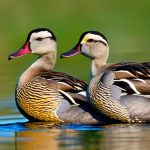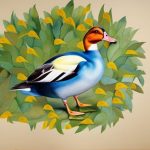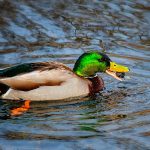Ducks are a diverse group of waterfowl that come in a wide variety of breeds, each with its own unique characteristics and traits. From the familiar Mallard to the lesser-known Silver Appleyard, duck breeds come in all shapes, sizes, and colors. Whether you’re a farmer, a hobbyist, or just a duck enthusiast, understanding the different breeds of ducks can be both fascinating and rewarding. Each breed has its own distinct history, purpose, and physical attributes, making them a fascinating subject for study and appreciation.
Duck breeds can be categorized into different groups based on their primary use, such as meat production, egg-laying, or ornamental purposes. Some breeds are known for their excellent foraging abilities, while others are prized for their beautiful plumage. Understanding the characteristics of each breed can help you choose the right ducks for your specific needs and preferences. In this article, we will explore some of the most popular and unique duck breeds, learn how to identify them, and discuss the importance of preserving these diverse and valuable animals.
Table of Contents
Key Takeaways
- There are many different duck breeds, each with their own unique characteristics and traits.
- Popular duck breeds like the Pekin, Mallard, and Muscovy have distinct physical and behavioral traits.
- Rare and unique duck breeds like the Cayuga, Swedish Blue, and Indian Runner are less common but still important to preserve.
- Visual guides and photos can help in identifying different duck breeds based on their appearance and features.
- Preserving duck breeds is important for maintaining genetic diversity and ensuring the survival of these unique and valuable animals.
Popular Duck Breeds and Their Characteristics
1. Pekin Duck: The Pekin duck is one of the most popular duck breeds in the United States. Known for its large size and white plumage, Pekin ducks are primarily raised for meat production. They have a calm and friendly disposition, making them a favorite among backyard duck keepers. Pekin ducks are also excellent foragers and are known for their high egg production.
2. Mallard Duck: The Mallard is perhaps the most recognizable duck breed, with its distinctive iridescent green head and bright orange bill. Mallards are found in the wild across North America and are also commonly kept in domestic settings. They are known for their adaptability and hardiness, making them a popular choice for hobbyists and conservation efforts.
3. Khaki Campbell Duck: The Khaki Campbell is a prolific egg layer, known for its ability to produce upwards of 300 eggs per year. This breed has a khaki-colored plumage and is prized for its excellent foraging abilities. Khaki Campbells are a popular choice for small-scale egg production and are known for their friendly and sociable nature.
4. Runner Duck: Runner ducks are known for their upright posture and distinctive running gait. They come in a variety of colors, including white, fawn, and black. Runner ducks are excellent foragers and are often used in organic pest control on farms and gardens. They are also known for their high egg production and make excellent pets due to their friendly and curious nature.
Rare and Unique Duck Breeds
While some duck breeds are well-known and widely kept, there are also many rare and unique breeds that are less common but equally fascinating. These breeds often have special characteristics that make them valuable for conservation efforts and breeding programs.
1. Silver Appleyard Duck: The Silver Appleyard is a striking breed known for its beautiful silver and white plumage. It was developed in England in the 1930s by Reginald Appleyard and is prized for its dual-purpose qualities, being both an excellent meat bird and a prolific egg layer. The breed nearly went extinct in the 1960s but has since been revived through dedicated breeding efforts.
2. Saxony Duck: The Saxony is a rare breed that originated in Germany in the 1930s. It is known for its stunning blue plumage and is prized for its excellent meat quality and high egg production. The Saxony is a large, dual-purpose breed that is valued for its calm temperament and adaptability to various climates.
3. East Indies Duck: The East Indies duck is a small, bantam-sized breed known for its unique coloration, which resembles that of a wild Mallard. They have iridescent green-black plumage with a beetle-green sheen, making them a striking addition to any flock. East Indies ducks are primarily kept for ornamental purposes and are valued for their beauty and rarity.
4. Aylesbury Duck: The Aylesbury is an old English breed known for its pure white plumage and distinctive pink bill and legs. It was historically prized for its meat quality and was popular in the London market in the 18th and 19th centuries. Today, the Aylesbury is considered a rare breed and is valued for its historical significance and unique appearance.
Duck Breed Photos: A Visual Guide
To help you better understand the diverse range of duck breeds, here are some photos showcasing the unique characteristics of different breeds:
[Include a variety of high-quality photos showcasing popular and rare duck breeds, highlighting their distinct plumage, size, and physical features.]
How to Identify Different Duck Breeds
Identifying different duck breeds can be an enjoyable challenge for duck enthusiasts. There are several key characteristics to look for when trying to determine the breed of a duck:
1. Plumage: The color and pattern of a duck’s plumage can provide valuable clues about its breed. Some breeds have distinct color patterns or markings that set them apart from others.
2. Size and Shape: Different duck breeds vary in size and body shape. Some breeds are larger and more robust, while others are smaller and more slender.
3. Bill Color: The color of a duck’s bill can also be a distinguishing feature. Some breeds have unique bill colors that can help identify them.
4. Behavior: Certain breeds have specific behavioral traits that can help with identification. For example, Runner ducks have an upright posture and distinctive running gait.
5. Egg Color: If you’re raising ducks for egg production, the color of their eggs can also be a clue to their breed. Some breeds lay white eggs, while others lay blue or green eggs.
By familiarizing yourself with these key characteristics, you can become adept at identifying different duck breeds and appreciating their unique qualities.
The Importance of Preserving Duck Breeds

Preserving the diverse range of duck breeds is crucial for maintaining genetic diversity and ensuring the long-term sustainability of these valuable animals. Each breed has its own set of traits that make it well-suited for specific purposes, whether it’s meat production, egg-laying, pest control, or ornamental value.
Conserving rare and unique duck breeds is essential for maintaining biodiversity within the poultry industry and preserving genetic resources that may be valuable for future breeding programs. Many rare duck breeds are at risk of extinction due to declining populations and loss of genetic diversity. By supporting conservation efforts and breeding programs, we can help ensure that these valuable breeds continue to thrive for future generations.
Furthermore, preserving duck breeds contributes to cultural heritage and historical significance. Many duck breeds have been developed over centuries through careful breeding practices and selection for specific traits. By preserving these breeds, we honor the traditions and knowledge of past generations while also ensuring that future generations have access to diverse and valuable genetic resources.
In conclusion, appreciating the diversity of duck breeds is not only fascinating but also essential for maintaining genetic diversity, cultural heritage, and sustainable agriculture practices. By learning about different duck breeds, identifying their unique characteristics, and supporting conservation efforts, we can contribute to the preservation of these valuable animals for future generations to enjoy.
Appreciating the Diversity of Duck Breeds
Duck breeds come in all shapes, sizes, colors, and purposes, making them a fascinating subject for study and appreciation. From popular breeds like the Pekin and Mallard to rare breeds like the Silver Appleyard and Saxony, each breed has its own unique characteristics that make it valuable for various purposes.
Understanding the importance of preserving diverse duck breeds is crucial for maintaining genetic diversity, cultural heritage, and sustainable agriculture practices. By supporting conservation efforts, breeding programs, and responsible stewardship of these valuable animals, we can ensure that future generations have access to a wide range of duck breeds with unique traits and qualities.
Whether you’re a farmer, a hobbyist, or just an admirer of ducks, taking the time to learn about different duck breeds can be both educational and rewarding. By appreciating the diversity of duck breeds, we can contribute to the preservation of these valuable animals while also gaining a deeper understanding of their historical significance and cultural importance.
If you’re fascinated by the diverse world of poultry, you’ll love exploring the various duck breeds and their unique characteristics. From the majestic Pekin duck to the colorful Mallard, each breed has its own charm and appeal. For more insights into raising and caring for ducks, check out this informative article on creating the perfect floor for your chicken coop at Poultry Wizard. It’s a great resource for poultry enthusiasts looking to enhance their knowledge and skills in bird husbandry.
FAQs
What are duck breeds?
Duck breeds refer to the different varieties of ducks that have been selectively bred for specific traits such as size, color, and purpose.
How many duck breeds are there?
There are over 120 different duck breeds recognized worldwide, each with its own unique characteristics and traits.
What are some common duck breeds?
Some common duck breeds include the Pekin, Mallard, Muscovy, Rouen, Khaki Campbell, and Indian Runner.
What are the differences between duck breeds?
Duck breeds can vary in size, color, plumage patterns, temperament, and purpose. Some breeds are raised for meat production, while others are prized for their egg-laying abilities or ornamental qualities.
Where can I find pictures of duck breeds?
You can find pictures of duck breeds in books about poultry, on websites dedicated to raising ducks, and in online image databases. Many breed associations also have galleries of photos showcasing the different duck breeds.
Meet Walter, the feathered-friend fanatic of Florida! Nestled in the sunshine state, Walter struts through life with his feathered companions, clucking his way to happiness. With a coop that’s fancier than a five-star hotel, he’s the Don Juan of the chicken world. When he’s not teaching his hens to do the cha-cha, you’ll find him in a heated debate with his prized rooster, Sir Clucks-a-Lot. Walter’s poultry passion is no yolk; he’s the sunny-side-up guy you never knew you needed in your flock of friends!







